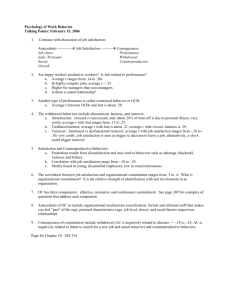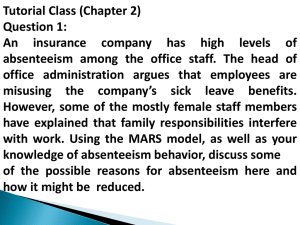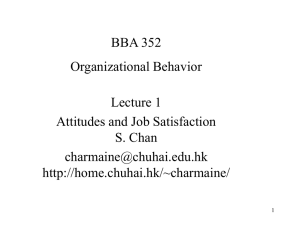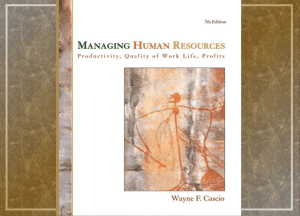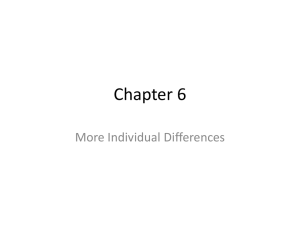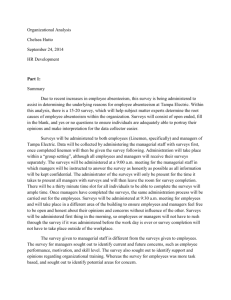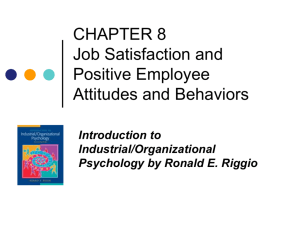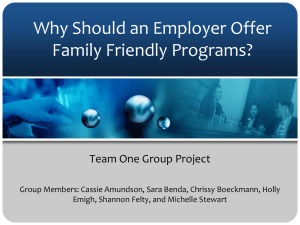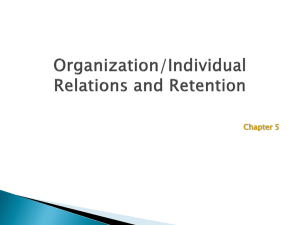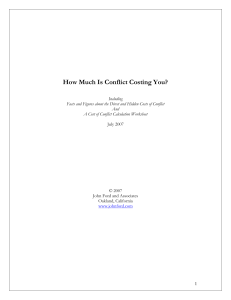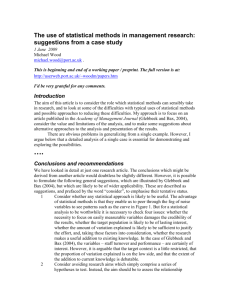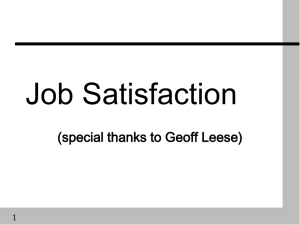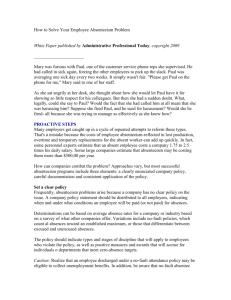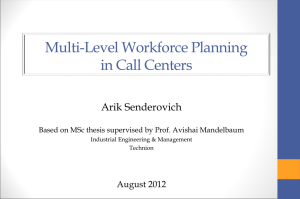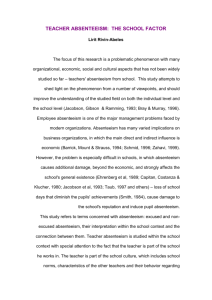Additional Slides : Job Satisfaction and Organizational
advertisement
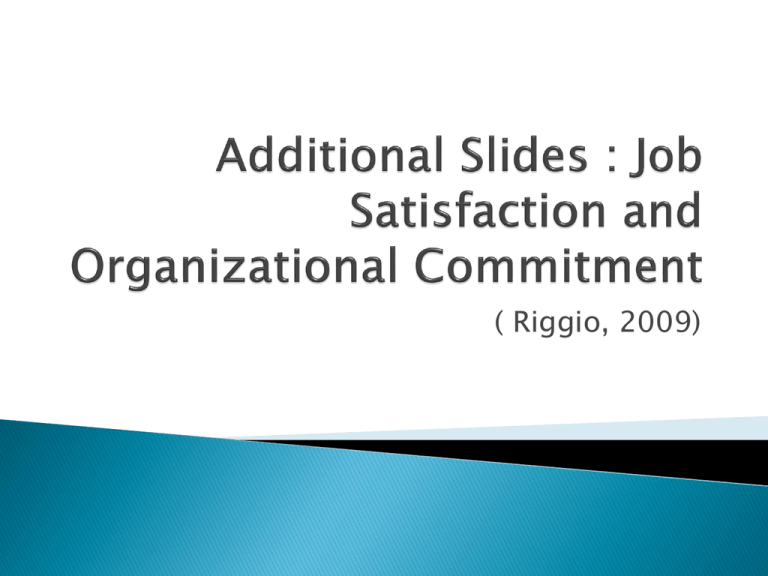
( Riggio, 2009) ◦ ◦ ◦ Voluntary absenteeism is when employees miss work because they want to do something else (i.e., not because they are ill or unable to work). Involuntary absenteeism occurs when employees have a legitimate excuse for missing work–typically illness. Involuntary absenteeism is inevitable; organizations can try to eliminate voluntary absenteeism, but this is difficult because it is difficult to distinguish between voluntary and involuntary absences. Turnover can also be categorized as voluntary or involuntary. ◦ ◦ ◦ Involuntary turnover occurs when an employee is fired or laid off. Voluntary turnover occurs when competent and capable employees leave to work elsewhere. Meta-analyses (Griffeth et al., 2000) indicate that low job satisfaction and low organizational commitment are related to higher turnover. ◦ ◦ ◦ A strong predictor of employee turnover is absenteeism, particularly the rate of absences immediately before the employee leaves. Turnover intentions refers to workers’ self-reported intentions to leave their jobs. Voluntary turnover is costly, and research indicates that employees who feel they are not treated fairly are more likely to leave an organization (Griffeth and Gaertner, 2001). Changes in job structure can be used to increase satisfaction and commitment. ◦ Job rotation is the systematic movement of workers from one type of task to another to alleviate boredom and enhance worker training. ◦ Job enlargement involves the expansion of a job to include additional and more varied work tasks. ◦ Job enrichment involves raising the level of responsibility of a job by allowing workers a greater voice in planning, execution, and evaluation of their own work activities. Changes in pay structure can be used to increase satisfaction and commitment. ◦ Skill-based pay is compensation in which workers are paid based on their knowledge and skills rather than their organizational positions. ◦ Merit pay is compensation in which employees receive a base rate and additional pay based on performance. ◦ Gainsharing is compensation based on effective group performance. ◦ Profit-sharing is a plan where all employees receive a small share of an organization’s profits. Flexible work schedules can be used to increase satisfaction and commitment. ◦ Compressed work weeks are ◦ schedules that decrease the number of days in the workweek while increasing number of hours worked per day. Flextime is a schedule that commits an employee to working a specified number of hours, but offers flexibility in regard to beginning and ending times for each day. Benefits programs are perhaps the most common way for employers to increase employees’ job satisfaction and commitment. ◦ ◦ Benefit programs can include flexible working hours, a variety of health care options, retirement plans, career development, health promotion programs, and employee-sponsored childcare. On-site child care programs increase job satisfaction, but have little effect on employee absenteeism (Goff et al., 1990). Organizational citizenship behaviors (OCBs) involve efforts by organizational members that advance or promote the work organization and its goals. ◦ ◦ OCBs are positively correlated with both job satisfaction and organizational commitment (Podsakoff et al., 2000). Employees who engage in OCBs are less likely to leave the organization and have lower voluntary absenteeism (Chen et al., 1998; Lee et al., 2004). Recently, there has been an explosion of research examining the role of positive affect (positive emotions that affect mood in the workplace) in affecting job satisfaction and positive employee behaviors. ◦ ◦ Dispositional (traitlike) positive affect is linked to higher job satisfaction and performance, and lower absenteeism and turnover (Pelled and Xin, 1999). Emotionally positive workers are more likely to engage in OCBs than emotionally negative workers (Bachrach and Jex, 2000).


